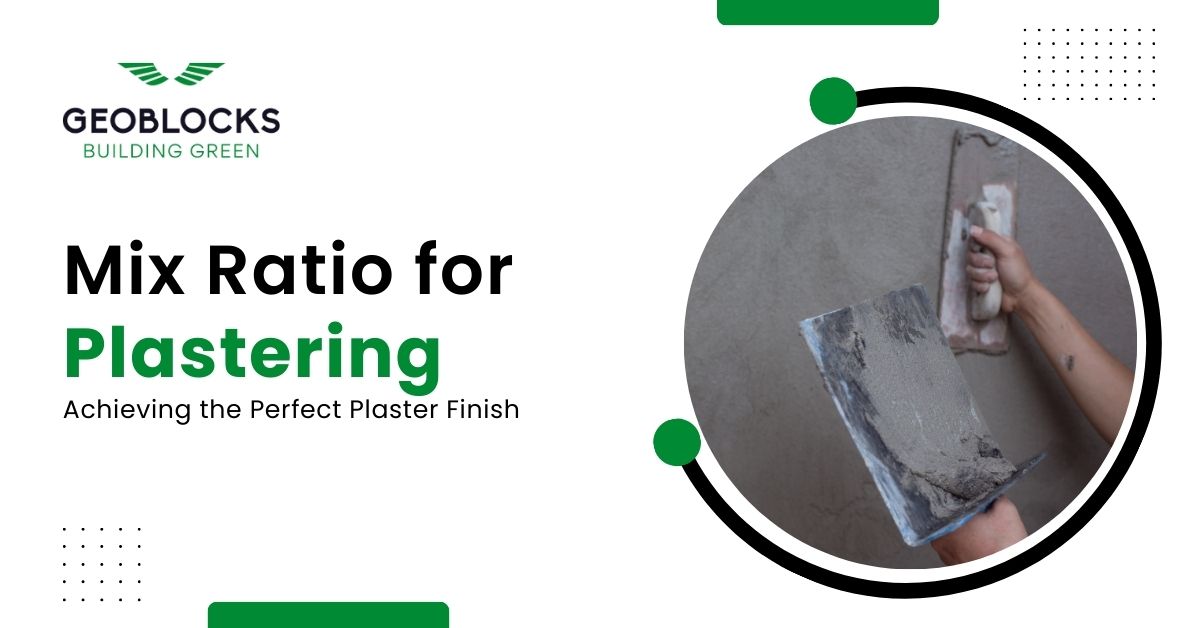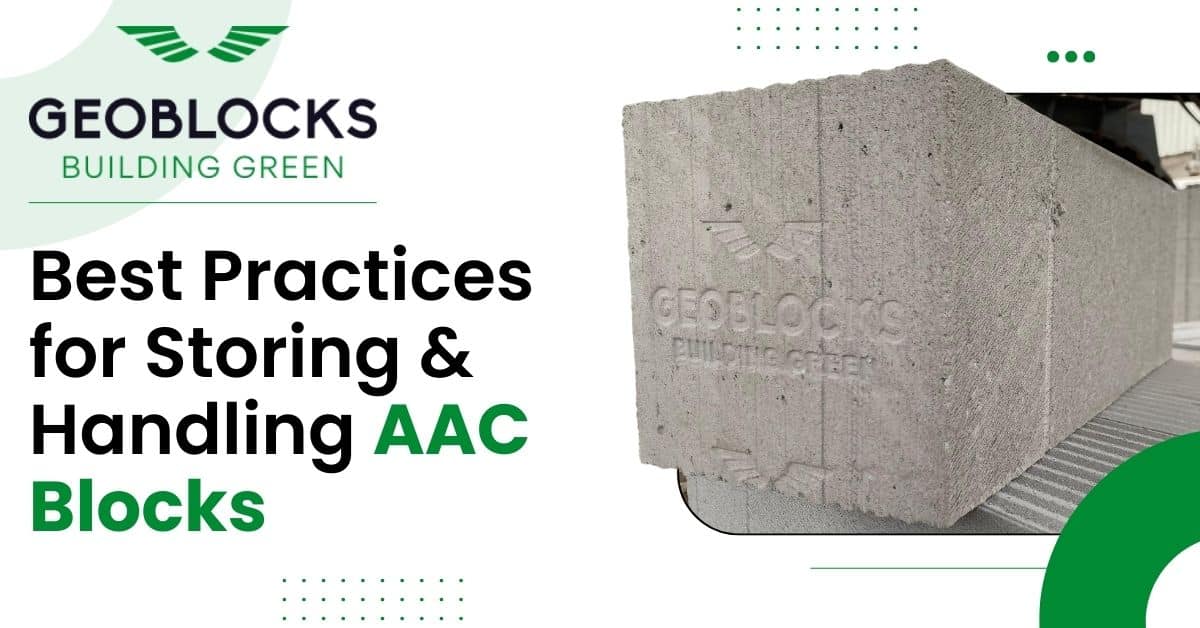Installing AAC blocks the right way is crucial for long-lasting, energy-efficient, and eco-friendly construction. Whether…

Achieving a flawless plaster finish is vital for both the appearance and durability of your walls. At GEOBLOCKS, a leading building materials supplier in Vadodara, we understand the importance of the correct mix ratio for plastering to ensure a high-quality application. Here’s a quick guide to help you get it right.
Understanding Mix Ratio for Plastering
The mix ratio for plastering determines the strength, texture, and overall finish of your plaster. Typically, the standard mix ratio is 1 part cement to 4-5 parts sand. This ratio provides a balanced combination of strength and workability. For a smoother and finer finish, you might use a ratio of 1 part cement to 3 parts sand.
Factors Affecting Mix Ratios
Plaster Thickness: The thickness of your plaster layer influences the mix ratio. For thicker applications, you may need a stronger mix to prevent cracks and ensure durability. For standard applications, a basic 1:4 or 1:5 ratio usually suffices.
Plaster Cost Per Sq Ft: Adjusting the mix ratio can affect material costs. While a higher cement content increases costs, it often improves the plaster’s strength and longevity.
Wall Conditions: The type of wall surface also impacts the mix ratio. For new walls, the standard mix is generally adequate. However, for older or uneven surfaces, adjustments may be necessary to ensure a smooth application.
Ready-to-Mix Plaster: For convenience and consistency, ready-to-mix plaster options are available. These products come pre-formulated with the optimal ratios and additives, simplifying the plastering process and ensuring consistent results.
Frequently Asked Questions
What is the Standard Mix Ratio for Plastering?
The standard mix ratio for plastering is typically 1 part cement to 4-5 parts sand. This provides a balanced strength and workability for most applications.
How Does Plaster Thickness Affect the Mix Ratio?
For thicker plaster layers, a stronger mix ratio, such as 1 part cement to 3 parts sand, may be required to prevent cracks and ensure durability.
What Factors Influence the Cost of Plaster Per Square Foot?
The cost of plaster per square foot is influenced by the mix ratio and the amount of cement used. Higher cement content increases costs but improves plaster strength.
Can I use Ready to Mix Plaster Instead of Traditional Mixes?
Yes, Ready to Mix Plaster is a convenient option that comes pre-formulated with optimal ratios and additives, ensuring consistency and ease of application.
How Do I Choose the Right Mix Ratio for my Wall Conditions?
For new walls, a standard 1:4 or 1:5 mix ratio is usually sufficient. For older or uneven surfaces, you might need to adjust the ratio or use additional bonding agents.
Conclusion
Selecting the right mix ratio for plastering is key to achieving a professional and durable finish. At GEOBLOCKS, we offer a range of high-quality plastering materials and ready-to-mix options to ensure your projects are successful. Contact Us Today to explore our products and get expert advice on your plastering needs.




